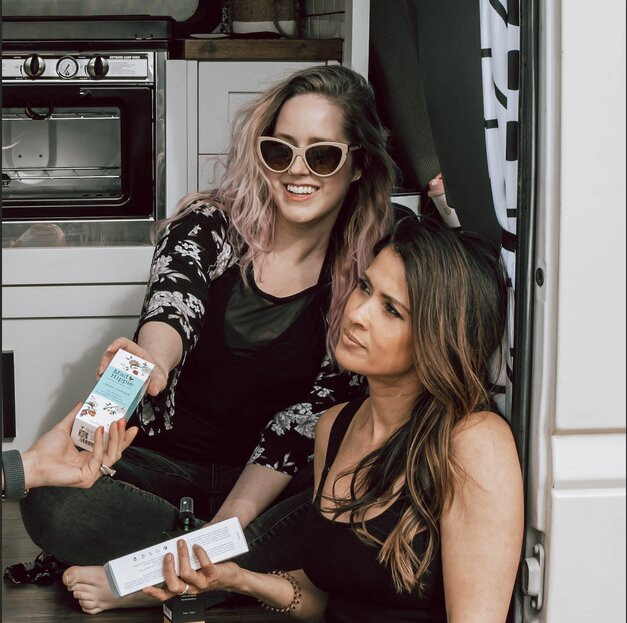If you’re ready to advance beyond our 101 series (learning about cleansers, moisturizers, and sun protection), it’s time to move on to Skincare 102 series where we explain toners, eye treatments, facial oils & serums.
This series is meant to help educate you on the products in your skincare routine, how they should be applied, and when they should be applied. Additionally, we’ll tell you what these products do, what their benefits are, and which one is best for different skin states.
This post will help you better understand another step in an optimal skincare routine: Eye Treatments!
SO WHAT’S THE POINT OF THE EYE TREATMENT STEP?
Eye treatments can help different conditions around the eyes like dark circles, wrinkles, and puffiness. It’s not always required to have a separate eye treatment from your moisturizers, though some people will benefit from having a separate eye treatment for a few reasons. For one, certain ingredients that are safe and effective for the face may be too active for the thin, delicate skin in the eye area. Additionally, if a facial moisturizer is too dense for the eye area it may cause milia (tiny white keratin deposits under the skin).
The style of eye treatment that’s best for you is generally based on your skin state, the skin concern you have, and the type of formulation preferred. The most common eye treatment formulations are creams, gels, balms, and emulsions.
CREAMS
Best for: Most skin conditions
Creams are the most universal style of eye treatment. They are usually a combination of ingredients like oil, water, waxes and skin nourishing ingredients. They tend to have a thicker, denser texture due to the nearly equal ratio of oils to water. This 50/50 balance helps seal in hydration, and act as a protective layer against the elements, but still has the ability to absorb into the skin a bit. The reason creams are so universal is that you can formulate a moisturizer for almost any skin state or condition, depending on the oil you use. The textures go from lightweight and whipped, to almost butter-rich, and everywhere in between.
The best way to apply cream is on damp, clean skin . Take a small ½ pea sized amount on your ring fingertip, then tap with another fingertip to warm. Gently tap into the skin around your eyes using your ring finger.
BALMS
Best for: Dry skin
Balms are the densest style of eye treatment. They are a mix of oils and waxes that solidify at room temperature. When they combine with body heat on your skin, they melt into liquid. Balms are the ultimate barrier against moisture loss. However, as they contain no water or humectants (moisture binders), they can’t provide hydration. Because of this, best results are achieved when balms are applied while your face is still damp from the shower or while your serum is still damp on your skin. Balms are excellent formulations if you’re exposed to an incredibly cold, windy climate, or you have chapped, dry skin.
The best way to apply balms is on damp, clean skin. Take a pea sized amount on your ring fingertip, then tap with another fingertip to warm. Gently tap into the skin around your eyes using your ring finger.
EMULSIONS
Best for: Normal to oily skin
Emulsions are lighter than creams, but contain similar ingredients (oil, water, waxes and skin nourishing ingredients). They have a higher water to oil ratio, making them thinner in texture; some have an almost milk-like liquidity. Since emulsions do contain more water than creams, oilier skin will benefit most from them, because this skin state is usually deficient in hydration. They’re also ideal for those who prefer a more lightweight formulation.
The best way to apply emulsions is on damp, clean skin. Take a pea sized amount on your ring fingertip, then tap with another fingertip to warm. Gently tap into the skin around your eyes using your ring finger.
GELS
Best for: Normal to oily skin
Gel eye treatments are generally water-based. They have a light, almost jelly like texture. Since they have either little or no oil content, they are most compatible with oily and combination skin. Hyaluronic acid is a favorite key ingredient in these formulations because it binds moisture to the skin, helps balance oiliness, and plumps skin full of hydration which smooths the appearance of fine lines.
The best way to apply gels is on damp, clean skin. Take a pea sized amount on your ring fingertip, then tap with another fingertip to warm. Gently tap into the skin around your eyes using your ring finger.
If you’re not sure of the different states of your skin, don’t worry – we spent months figuring out how our software can best capture the different states of your face. Make sure to set up your profile if you haven’t already by visiting our homepage, and we’ll be happy to help you find moisturizers + eye treatments that are best for your skin (plus, all of our new customers get a discount off of their first order)!
Hopefully we have made the different styles of eye treatments a little easier to navigate and piqued your interest in trying one out to boost your daily routine. Stay tuned for the next blog post in our Skincare 102 series: The Routine!
To see any of the other posts in our Skincare 101 & 102 series, click on any of the links below:


